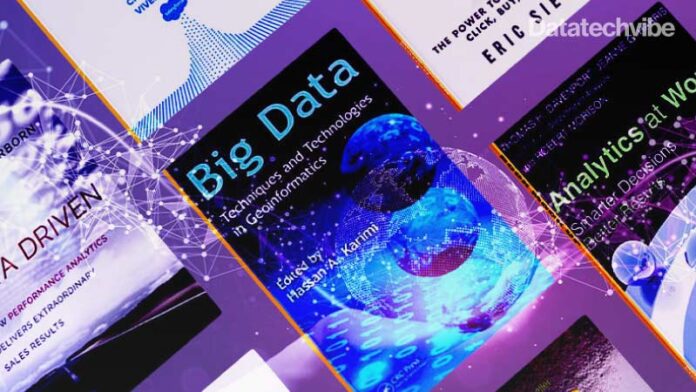Datatechvibe presents a list of the top 20 data innovation books for the year! Gain valuable insight and inspiration to help you stay ahead of the curve and take your projects to the next level. From machine learning to data-driven decision-making, these books offer a unique perspective on the latest developments in data innovation.
Is the skill gap putting your AI strategies at risk? According to a recent study, 93% of US and UK organisations consider AI to be a business priority and have projects planned or already in production. However, more than half of them (51%) acknowledge that they don’t have the right mix of skilled AI talent in-house to bring their strategies to life. This is one of the key barriers that enterprises face with maximising its AI capabilities.
The same can be said for other emerging technologies that are becoming critical to add a competitive edge but fall short during execution. From deep dives into machine learning to practical advice for data-driven decision-making, our book list offers a unique perspective on the world of data innovation and its potential.
Here’s our list of the top 20 reads;
Analytics at Work: Smarter Decisions, Better Results
Authors: Thomas H. Davenport, Jeanne G. Harris, Robert Morison
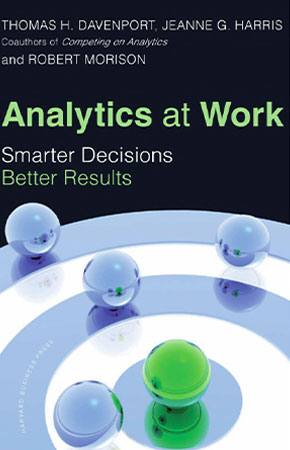
Most companies have massive amounts of data at their disposal yet fail to utilise it meaningfully. But a powerful new business tool analytics enables many firms to aggressively leverage their data in key business decisions and processes with impressive results.
In Analytics at Work: Smarter Decisions, Better Results, Thomas H. Davenport, Jeanne G. Harris, and coauthor Robert Morison reveal how any manager can effectively deploy analytics in day-to-day operations—one business decision at a time. They show how many analytical tools, from statistical analysis to qualitative measures like systematic behaviour coding, can improve decisions about everything from what new product offering might interest customers to whether marketing dollars are being most effectively deployed. Combining the science of quantitative analysis with sound reasoning, Analytics at Work provides a road map and tools for unleashing the potential buried in your company’s data.
Big Data: A Revolution That Will Transform How We Live, Work, and Think
Authors: Viktor Mayer-Schönberger, Kenneth Cukier
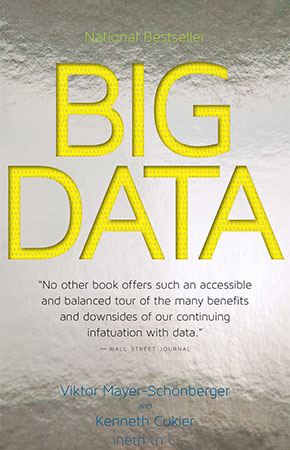 It seems like “big data” is in the news every day as we read the latest examples of how powerful algorithms are teasing out the hidden connections between seemingly unrelated things. Whether the NSA uses it to fight terrorism or online retailers to predict customers’ buying patterns, big data is a revolution occurring around us, in the process of forever changing economics, science, culture, and the way we think.
It seems like “big data” is in the news every day as we read the latest examples of how powerful algorithms are teasing out the hidden connections between seemingly unrelated things. Whether the NSA uses it to fight terrorism or online retailers to predict customers’ buying patterns, big data is a revolution occurring around us, in the process of forever changing economics, science, culture, and the way we think.
Big data also poses new threats, from the end of privacy as we know it to the prospect of being penalised for things we haven’t even done yet, based on big data’s ability to predict our future behaviour. What we have already seen is just the tip of the iceberg. Big Data: A Revolution That Will Transform How We Live, Work, and Think is a book about the subject, with two leading experts, Viktor Mayer-Schönberger and Kenneth Cukier, explaining what big data is, how it will change our lives and what we can do to protect ourselves from its hazards.
Big Data: Principles and Best Practices of Scalable Real-time Data Systems
Authors: Nathan Marz, James Warren

Web-scale applications like social networks, real-time analytics, or ecommerce sites deal with a lot of data whose volume and velocity exceed the limits of traditional database systems. These applications require architectures built around clusters of machines to store and process data of any size or speed. Fortunately, scale and simplicity are not mutually exclusive. Big Data teaches you to build big data systems using an architecture designed specifically to capture and analyse web-scale data.
In Big Data: Principles and Best Practices of Scalable Real-time Data Systems, Nathan Marz and James Warren present the Lambda Architecture, a scalable, easy-to-understand approach that can be built and run by a small team. You’ll explore the theory of big data systems and how to implement them in practice. In addition to discovering a general framework for processing big data, you’ll learn specific technologies like Hadoop, Storm, and NoSQL databases.
Big Data: Techniques and Technologies in Geoinformatics
Author: Hassan A. Karimi

Big data has always been a major challenge in geoinformatics as geospatial data comes in various types and formats, new geospatial data are acquired quickly, and geospatial databases are inherently large. While there have been advances in hardware and software for handling big data, they often need to catch up to handling geospatial big data efficiently and effectively.
Big Data: Techniques and Technologies in Geoinformatics tackles these challenges head-on, integrating coverage of techniques and technologies for storing, managing, and computing geospatial big data. Providing a perspective based on an analysis of time, applications, and resources, this book familiarises readers with geospatial applications that fall under big data. It explores new trends in geospatial data collection, such as geo-crowdsourcing and advanced data collection technologies, such as LiDAR point clouds. The book features a range of topics on big data techniques and technologies in geoinformatics, including distributed computing, geospatial data analytics, social media, and volunteered geographic information.
Big Data: Using SMART Big Data, Analytics and Metrics To Make Better Decisions and Improve Performance
Author: Bernard Marr
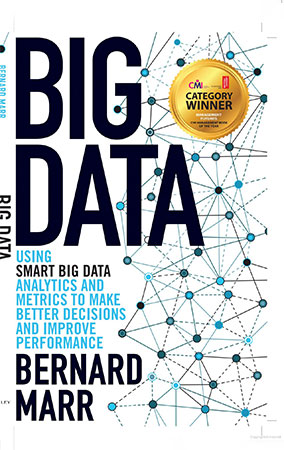
There is so much buzz around big data. We all need to know what it is and how it works – that much is obvious. But is a basic understanding of the theory enough to hold your own in strategy meetings? Probably not. What will set you apart from the rest is knowing how to use big data to get solid, real-world business results – and putting that in place to improve performance.
Big Data: Using SMART Big Data, Analytics and Metrics To Make Better Decisions and Improve Performance will give you a clear understanding, blueprint, and step-by-step approach to building your big data strategy. This is a well-needed practical introduction to actually putting the topic into practice. Illustrated with numerous real-world examples from a cross-section of companies and organisations, big data will take you through the five steps of the SMART model: Start with strategy, measure metrics and data, apply analytics, report results, and transform.
Bernard Marr discusses how companies need to define what it is they need to know and clearly outlines how companies can collect relevant data and measure the metrics that will help them answer their most critical business questions. He addresses how the results of big data analytics can be visualised and communicated to ensure key decision-makers understand them.
Data Driven: Harnessing Data and AI to Reinvent Customer Engagement
Authors: Tom Chavez, Chris O’Hara, Vivek Vaidya

A tectonic shift in the practice of marketing is underway. Digital technology, social media, and ecommerce have radically changed how consumers access information, order products, and shop for services. Using the latest technologies―cloud, mobile, social, IoT, and AI―you have more data about consumers and their needs, wants, and affinities than ever.
In Data Driven: Harnessing Data and AI to Reinvent Customer Engagement, you will discover the three principles for building a successful data strategy and the five sources of data-driven power. Top companies put these data-driven strategies into action:
- How Pandora used second and third-hand data to learn more about its listeners.
- How Georgia-Pacific moved from scarcity to abundance in the data sphere.
- How Dunkin’ Brands leveraged CRM data as a force multiplier for customer engagement.
If you wonder what the future holds, you will receive seven forecasts to better prepare you for what may come next. Sure to be a classic, the book is a practical road map to the modern marketing landscape and a toolkit for success in the face of already underway changes.
Data Driven: How Performance Analytics Delivers Extraordinary Sales Results
Author: Jenny Dearborn
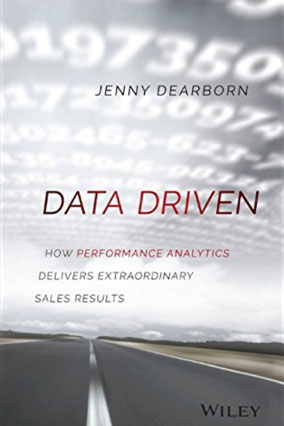
Data Driven: How Performance Analytics Delivers Extraordinary Sales Results is a uniquely practical guide to increasing sales success using the power of data analytics. Written by Jenny Dearborn, this book shows how to transform the corporate sales function by leveraging big data into better decision-making, more informed strategy, and increased effectiveness throughout the organisation. Engaging and informative, this book tells the story of a newly hired sales chief under intense pressure to deliver higher performance from her team and how data analytics becomes the ultimate driver behind the sales function turnaround. Each chapter features insightful commentary and practical notes on the points the story raises. One chapter is devoted solely to laying out the Prescriptive Action Model step-by-step, giving you the actionable guidance you need to implement it in your organisation.
Predictive and prescriptive analytics is poised to change corporate sales, and companies that fail to adapt to the new realities and adopt the new practices will be left behind. This book explains why the Prescriptive Action Model is the key corporate sales weapon of the 21st Century and how you can implement this dynamic new resource to bring value to your business.
Data Science for Business: What You Need to Know about Data Mining and Data-Analytic Thinking
Authors: Foster Provost, Tom Fawcett
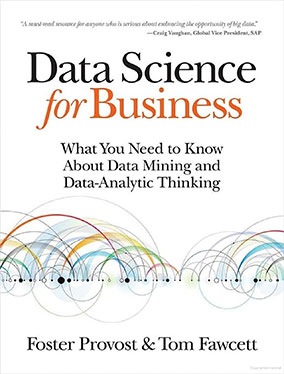
Written by renowned data science experts Foster Provost and Tom Fawcett, Data Science for Business introduces the fundamental principles of data science and walks you through the “data-analytic thinking” necessary for extracting useful knowledge and business value from your data collection. This guide also helps you understand the many data-mining techniques in use today.
Based on an MBA course Provost has taught at New York University over the past ten years, Data Science for Business provides examples of real-world business problems to illustrate these principles. You will learn how to improve communication between business stakeholders and data scientists and how to participate intelligently in your company’s data science projects. You will also discover how to think data analytically and fully appreciate how data science methods can support business decision-making.
Data Science for Dummies
Author: Lillian Pierson
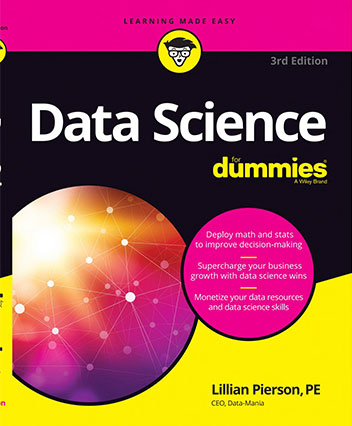
Data science consultant, Lillian Pierson, shares her proprietary STAR Framework – A simple, proven process for leading profit-forming data science projects. The only process you will ever need to lead profitable data science projects Secret, reverse-engineered data monetisation tactics that no one’s talking about The shocking truth about how simple natural language processing can be How to beat the crowd of data professionals by cultivating your own unique blend of data science expertise
Whether you are new to the data science field or already a decade in, you are sure to learn something new and precious from Data Science For Dummies.
Data Smart: Using Data Science to Transform Information into Insight
Author: John W. Foreman
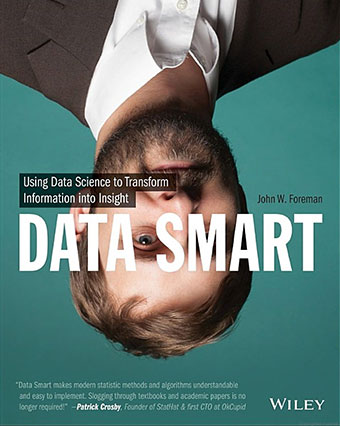
Data Smart: Using Data Science to Transform Information into Insight is a book for those serious about learning the analytic techniques, maths and the magic behind big data.
Each chapter will cover a different technique in a spreadsheet so you can follow along: mathematical optimisation, including non-linear programming and genetic algorithms clustering via k-means, spherical k-means, and graph modularity data mining in graphs, such as outlier detection supervised AI through logistic regression, ensemble models, and bag-of-words models forecasting seasonal adjustments, and prediction intervals through monte carlo simulation moving from spreadsheets into the R programming language.
You get your hands dirty as you work alongside John W. Foreman through each technique. But never fear, the topics are readily applicable and the author laces humour throughout. You’ll even learn what a dead squirrel has to do with optimisation modelling, which you no doubt are dying to know.
Data Strategy: How to Profit from a World of Big Data, Analytics and the Internet of Things
Author: Bernard Marr

Less than 0.5% of all data is currently analysed and used. However, business leaders and managers need to be more concerned or sceptical about data. Data is revolutionising how we work, and companies view data as a strategic asset that will survive and thrive. Data Strategy: How to Profit from a World of Big Data, Analytics and the Internet of Things guides to creating a robust data strategy. Explaining how to identify your strategic data needs, what methods to use to collect the data and, most importantly, how to translate your data into organisational insights for improved business decision-making and performance, this is essential reading for anyone aiming to leverage the value of their business data and gain competitive advantage.
Packed with case studies and real-world examples, advice on how to build data competencies in an organisation and crucial coverage of how to ensure your data doesn’t become a liability, Data Strategy will equip any organisation with the tools and strategies it needs to profit from Big Data, analytics and the IoT.
Data-ism: The Revolution Transforming Decision Making, Consumer Behavior, and Almost Everything Else
Author: Steve Lohr
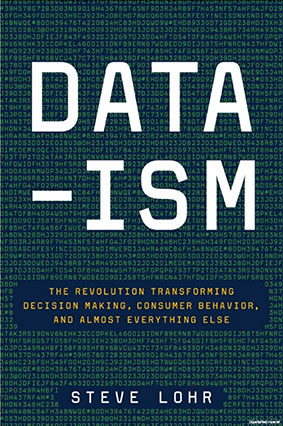
In Data-ism: The Revolution Transforming Decision Making, Consumer Behavior, and Almost Everything Else, the author Steve Lohr explains how big-data technology is ushering in a revolution in proportions that promise to be the basis of the next wave of efficiency and innovation across the economy. But more is at work here than technology. Big data is also the vehicle for a point of view, or philosophy, about how decisions will be—and perhaps should be—made in the future. Lohr investigates the benefits of data while also examining its dark side.
The book is about this next phase, in which vast internet-scale data sets are used for discovery and prediction in virtually every field. It shows how this new revolution will change decision-making—relying more on data and analysis and less on intuition and experience—and transform the nature of leadership and management. The book is a field guide to what is ahead, explaining how individuals and institutions must exploit, protect, and manage data to stay competitive in the coming years. With rich examples of how big data’s rise affects everyday life.
Designing Data-Intensive Applications: The Big Ideas Behind Reliable, Scalable, and Maintainable Systems
Author: Martin Kleppmann
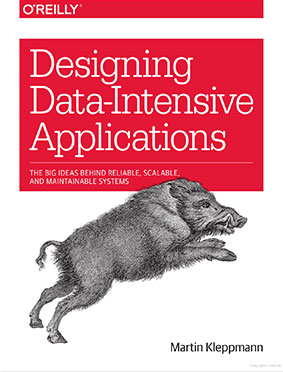
Data is at the centre of many challenges in system design today. Difficult issues such as scalability, consistency, reliability, efficiency, and maintainability need to be figured out. In addition, Designing Data-Intensive Applications: The Big Ideas Behind Reliable, Scalable, and Maintainable Systems has an overwhelming variety of tools, including relational databases, NoSQL datastores, stream or batch processors, and message brokers. What are the right choices for your application? How do you make sense of all these buzzwords?
In this practical and comprehensive guide, author Martin Kleppmann helps you navigate this diverse landscape by examining the pros and cons of various technologies for processing and storing data. The software keeps changing, but the fundamental principles remain the same. With this book, software engineers and architects will learn how to apply those ideas in practice and how to make full use of data in modern applications.
Ethics of Big Data: Balancing Risk and Innovation
Author: Kord Davis
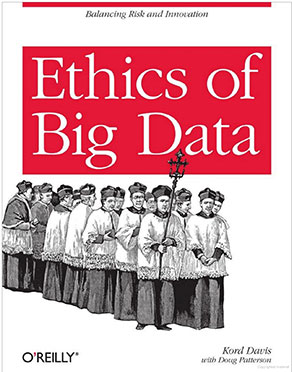
What are your organisation’s policies for generating and using huge datasets full of personal information? Ethics of Big Data: Balancing Risk and Innovation examines ethical questions raised by big data and explains why enterprises must reconsider business decisions concerning privacy and identity. Authors Kord Davis and Doug Patterson provide methods and techniques to help your business engage in a transparent and productive ethical inquiry into your current data practices.
Both individuals and organisations have legitimate interests in understanding how data is handled. Your use of data can directly affect the brand quality and revenue—as Target, Apple, Netflix, and dozens of other companies have discovered. With this book, you will learn how to align your actions with explicit company values and preserve the trust of customers, partners, and stakeholders.
Numsense! Data Science for the Layman: No Math Added
Authors: Annalyn Ng, Kenneth Soo
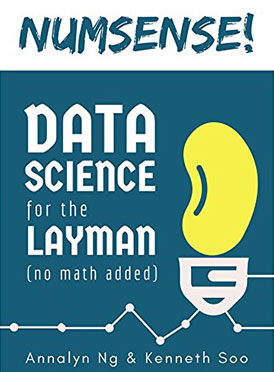
Want to get started on data science? Authors promise: no maths added.
Numsense! Data Science for the Layman: No Math Added has been written in layman’s terms as a gentle introduction to data science and its algorithms. Each algorithm has a dedicated chapter explaining how it works and showing an example of a real-world application. To help you grasp key concepts, the author sticks to intuitive explanations and lots of visuals, all of which are colourblind-friendly.
Popular concepts covered include A/B testing, anomaly detection, association rules, clustering decision trees and random forests, regression analysis, social network analysis and neural networks. Features include:
- Intuitive explanations and visuals.
- Real-world applications to illustrate each algorithm.
- Point summaries at the end of each chapter.
- Reference sheets comparing the pros and cons of algorithms and a glossary list of commonly-used terms.
With this book, Annalyn Ng and Kenneth Soo are giving you a practical understanding of data science so that you can leverage its strengths in making better decisions.
People Analytics in the Era of Big Data: Changing the Way You Attract, Acquire, Develop, and Retain Talent
Authors: Jean-Paul Isson, Jesse S. Harriott
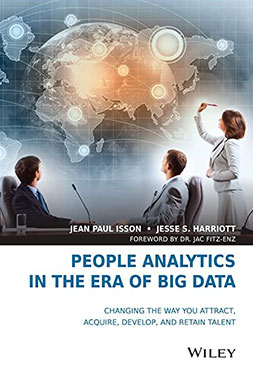
People Analytics in the Era of Big Data: Changing the Way You Attract, Acquire, Develop, and Retain Talent provides a blueprint for leveraging your talent pool through data analytics. Written by the Global Vice President of Business Intelligence and Predictive Analytics at Monster Worldwide, the book is packed full of actionable insights to help you source, recruit, acquire, engage, retain, promote, and manage the exceptional talent your organisation needs. With a unique approach that applies analytics to every stage of the hiring process and the entire workforce planning and management cycle, this informative guide provides the key perspective that brings analytics into HR in a truly useful way.
You’re already inundated with disparate employee data, so why not mine that data for insights that add value to your organisation and strengthen your workforce? This book presents a practical framework for real-world talent analytics, backed by groundbreaking examples of workforce analytics across the US, Canada, Europe, Asia, and Australia.
Predictive Analytics: The Power to Predict Who Will Click, Buy, Lie, or Die
Author: Eric Siegel
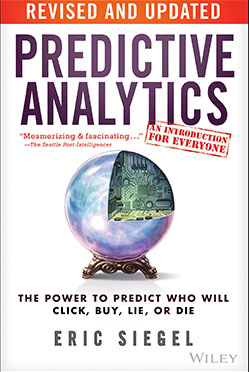
In this rich, fascinating—surprisingly accessible—introduction, the author Eric Siegel reveals how predictive analytics (aka machine learning) works and how it affects everyone every day. Rather than a “how-to” for hands-on techies, the book serves lay readers and experts by covering new case studies and state-of-the-art techniques. Predictive Analytics: The Power to Predict Who Will Click, Buy, Lie, or Die unleashes the power of data. With this technology, the computer learns from data how to predict the future behaviour of individuals.
Perfect prediction is impossible, but putting odds on the future drives millions of decisions more effectively, determining whom to call, mail, investigate, incarcerate, set up a date, or medicate. How does predictive analytics work? This jam-packed book satisfies by demystifying the intriguing science under the hood. It sets a strong foundation for future hands-on practitioners pursuing a career in the field, delivers the prerequisite knowledge, and whets your appetite for more.
Storytelling with Data: A Data Visualization Guide for Business Professionals
Author: Cole Nussbaumer Knaflic
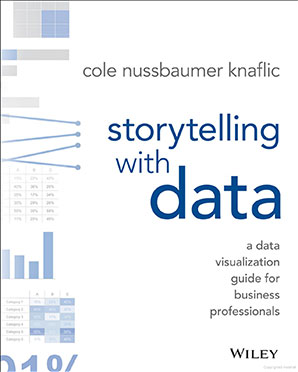
Storytelling with Data: A Data Visualization Guide for Business Professionals teaches you the fundamentals of data visualisation and communicating effectively with data. You will discover the power of storytelling and how to make data a pivotal point in your story. The lessons in this illuminative text are grounded in theory but made accessible through numerous real-world examples—ready for immediate application to your next graph or presentation.
Storytelling is not an inherent skill, especially regarding data visualisation, and the tools at our disposal make it more challenging. This book demonstrates how to go beyond conventional tools to reach the root of your data and how to use your data to create an engaging, informative, and compelling story.
The Big Data-Driven Business: How to Use Big Data to Win Customers, Beat Competitors, and Boost Profits
Authors: Russell Glass, Sean Callahan
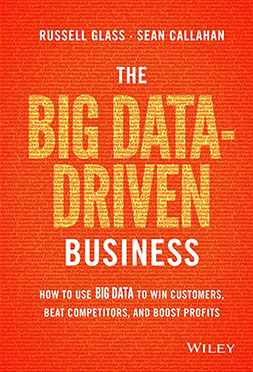
The Big Data-Driven Business: How to Use Big Data to Win Customers, Beat Competitors, and Boost Profits makes the case that big data is for real and more than just big hype. The book uses real-life examples—from Nate Silver to Copernicus and Apple to Blackberry—to demonstrate how future winners will use big data to seek the truth. Written by Russell Glass and Sean Callahan, this book is a comprehensive and accessible guide on how to win customers, beat competitors, and boost the bottom line with big data.
The marketplace has entered an era where the customer holds all the cards. With unprecedented choices in both the consumer and B2B worlds, businesses must better understand their customers and prospects. Big data is the key to this insight because it provides a comprehensive view of a company’s customers—who they are and maybe tomorrow.
The Data Revolution: Big Data, Open Data, Data Infrastructures, and Their Consequence
Author: Rob Kitchin
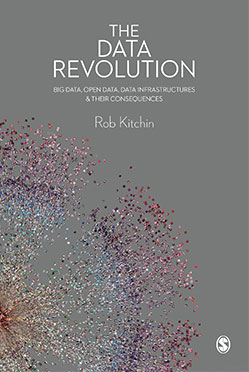
Traditionally, data has been a scarce commodity that has been either jealously guarded or expensively traded, given its value. Technological developments and political lobbying have turned this position on its head in recent years. Data now flow as a deep and wide torrent, are low-cost, supported by robust infrastructures, and are increasingly open and accessible.
A data revolution is underway, already reshaping how knowledge is produced, business conducted, and governance enacted, as well as raising many questions concerning surveillance, privacy, security, profiling, social sorting, and intellectual property rights. In contrast to the hype and hubris of much media and business coverage, The Data Revolution: Big Data, Open Data, Data Infrastructures, and Their Consequence provides a synoptic and critical analysis of the emerging data landscape. Accessible in style, the book provides a synoptic overview of big data, open data and data infrastructures. An introduction to thinking conceptually about data, data infrastructures, data analytics and data markets. Acritical discussion of the technical shortcomings and the data revolution’s social, political and ethical consequences. An analysis of the implications of the data revolution to academic, business and government practices.
If you liked reading this, you might like our other stories
Challenges For Data Leaders In South Africa
Big Government Push For South Africa’s Data And Analytics Landscape



